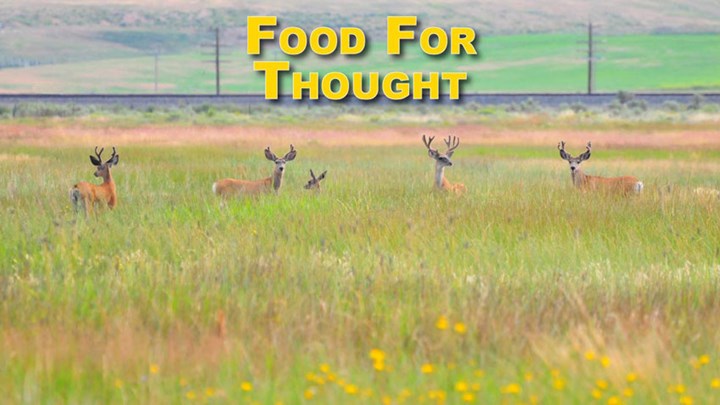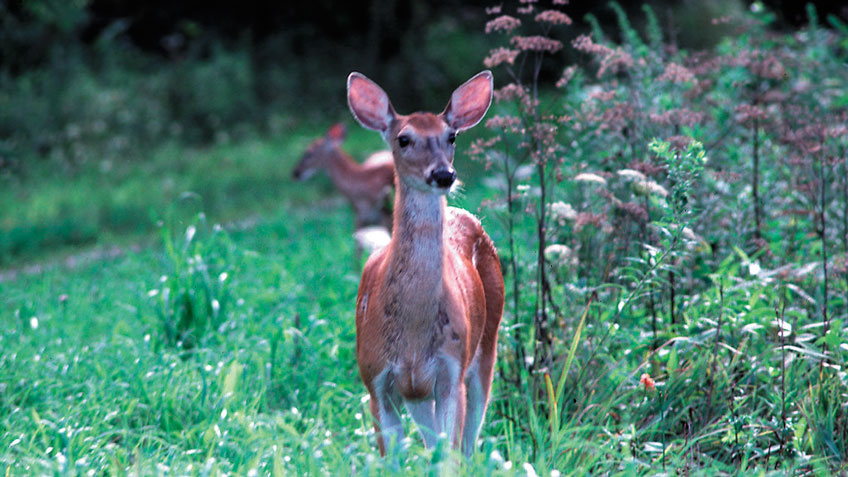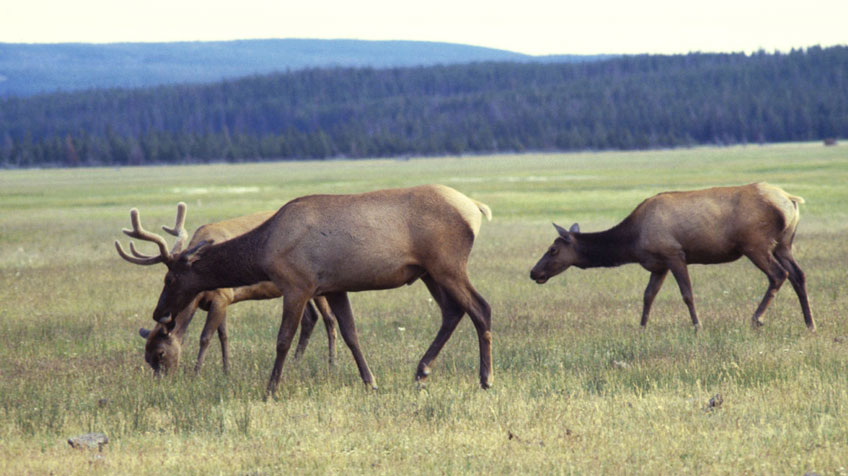
by Patrick Durkin - Tuesday, August 13, 2019

If each state’s resident hunters were as motivated to hunt as their nonresident counterparts, our nation might have far fewer concerns about hunting’s future.
A recent assignment for the NRA’s American Hunter magazine required an extensive review of license sales and hunt-application data for seven popular states for hunting whitetail deer: Ohio, Iowa, Minnesota, Wisconsin, Michigan, New York and Pennsylvania; and five popular states for elk and/or mule deer: Colorado, Arizona, Wyoming, Montana and South Dakota.
With the exception of Wyoming and South Dakota, most states resembled Wisconsin’s recent deer-hunting trends, which showed nonresident participation more steady over time. For example, Wisconsin had roughly 654,000 resident gun-deer hunters in 1999 and 554,936 in 2017, a 15 percent decline. Meanwhile, the Badger state had about 36,400 nonresident gun-deer hunters in 1999 and 34,722 in 2017, a 4.6 percent decline.
Granted, both categories showed declines, but Wisconsin’s nonresident deer hunters dropped out about two-thirds more slowly than did resident deer hunters. And a review of recent license sales reveals that Wisconsin actually sold 1 percent more nonresident gun-deer licenses in 2017 (34,722) than it did in 2012 (34,458). Meanwhile, its resident gun-deer license sales fell 7.6 percent between 2012 (600,363) and 2017.
That trend was much the same across most of the seven whitetail states we surveyed in the North, with resident gun-deer licenses down but nonresident sales up in Iowa, Minnesota, Michigan and New York; while both categories were up in Ohio and down in Pennsylvania.

Western states, meanwhile, documented increased interest in both residents and nonresidents. These states are bucking nationwide declines in hunting participation. And their high-priced nonresident deer (and elk) licenses aren’t discouraging out-of-state hunters, despite being far more expensive than eastern states’ nonresident fees.
Colorado, Arizona and Montana saw increasing interest in resident and nonresident applications for elk and deer licenses from 2012 to 2017. And even when looking at actual license sales, Wyoming sold 5.5 percent more resident elk and deer tags in 2017 (117,000) than in 2012 (111,000), and only 1.3 percent fewer nonresident elk and deer tags in 2017 (37,600) than in 2012 (38,000). Only South Dakota’s gun-deer license sales declined in both categories, with a 7.4 percent slide in resident deer hunters from 2012 to 2017, and an 11 percent decline in nonresident deer hunters from 2012 to 2017.
Still, it’s hard to precisely compare hunter numbers and license sales or permit applications between states. The process is fairly similar in eastern states, where big-game hunting mostly means whitetail deer with a smattering of black bears. Most eastern states also sell deer licenses over the counter with no cap on total sales in efforts to manage thriving deer populations.
Comparisons to and among western states are more complicated because of multiple big-game species, widely varying habitats, multiple seasons per species, varying quotas by sex and species, varying license-application deadlines and fewer on-demand/over-the-counter license sales.
Colorado, for example, offered 1,020 different hunting seasons in 2018 for elk alone, which required a 927-page report to assess how many residents, nonresidents and landowners applied for the state’s hunting opportunities. Further, western states closely regulate how many nonresident tags to allocate each year as part of each species’ scientifically-managed quota.
Despite all those complications, one trend remains clear in the 12 states mentioned: Nonresidents remain stalwart hunters, despite general declines in hunting numbers and higher-priced licenses. Of the 12 states surveyed, nine (75 percent) reported increased nonresident license sales and/or license applications since 2012. In contrast, only five of those 12 states (42 percent) reported increased resident sales or applications. Further, only four—Ohio, Colorado, Arizona and Montana—reported increases in both categories.

Assessing the reasons behind nonresidents’ devotion isn’t easy to find in data, of course. Still, we can assume many nonresident hunters have family roots and other emotional ties to states where they grew up hunting. We also can assume those who commit time and money to out-of-state hunts are likely passionate hunters who seek more adventures and experiences than do casual hunters. Many of them desire an annual “hunt of a lifetime.”
That might help explain an interesting phenomenon: The U.S. hunting population fell by about 1 million hunters between 2006 and 2016, but that relentless shedding of baby-boomer hunters has not boosted the odds of drawing coveted elk or muley tags in western states.
Whatever the nonresidents’ motivations might be, they’re powerful. Participation rates since 2012 by nonresident hunters outpaced those of resident hunters in 10 of the 12 states reviewed. Further, where resident participation rates were greater (Wyoming and South Dakota), the differences were only 6.8 and 3.5 percent, respectively.
NRAHLF.org contributor Jim Heffelfinger, wildlife science coordinator for the Arizona Game and Fish Department and a research scientist at the University of Arizona, notes that his state had about 90,000 applications for about 45,000 deer tags in 2018, and 115,500 applications for 25,400 elk tags.
“You can lose a lot of your fellow hunters and still have a tough time drawing a tag,” Heffelfinger said. “And the tags many people are really interested in drawing, the ones that often cause the loudest complaining about not getting drawn, those might never loosen up.”
About the Author:
Patrick Durkin of Waupaca, Wisc., is an award-winning outdoor writer, newspaper columnist, and general outdoors reporter. He also provides editing services for books and magazines. He is a frequent contributor to American Hunter magazine, was named contributing editor of the Archery Trade Association in 2001 and writes frequently for national archery and hunting magazines. In addition, he has been MeatEater's wildlife research contributor since 2018 and an editor for Inside Archery magazine, an archery industry trade publication, since 2014.
After serving in the U.S. Navy from 1975 through 1980, Durkin earned a journalism degree at the University of Wisconsin-Oshkosh. He spent the next eight years working as a sports reporter, education reporter, weekend editor and outdoors editor at the Oshkosh Northwestern newspaper before beginning his career in hunting magazines. He edited Deer & Deer Hunting magazine from 1991 through 2001, Whitetail Hunting Strategies magazine from 2002 through 2003 and National Whitetail Hunter’s Journal magazine from 2003 to 2006.
Durkin married his wife, Penny, in 1980, and they have three adult daughters and six grandchildren.
Follow NRA Hunters' Leadership Forum on Twitter @HuntersLead.
E-mail your comments/questions about this site to:
[email protected]
Proudly supported by The NRA Foundation and Friends of NRA fundraising.
